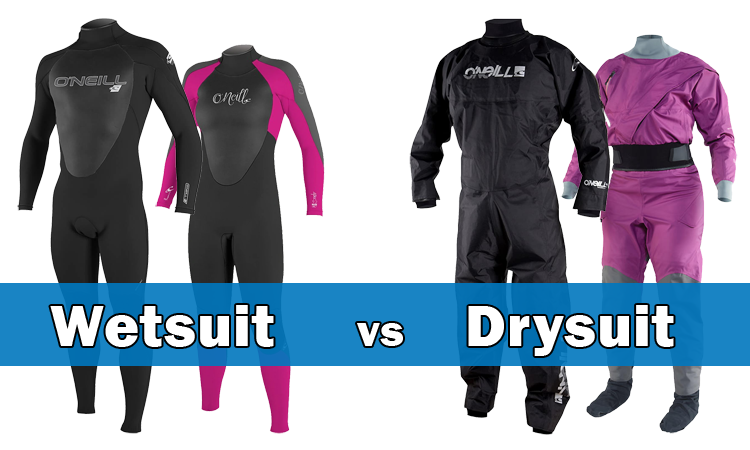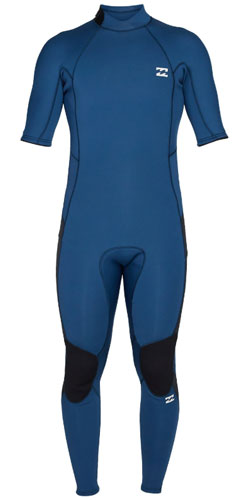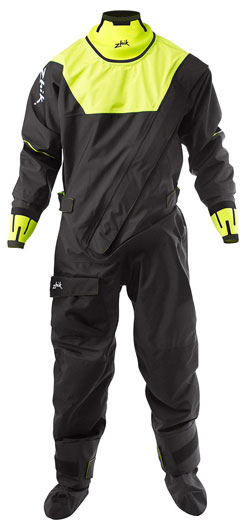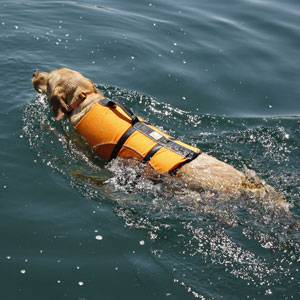
The main purpose of exposure suits is to keep you warmer in the water by slowing down the loss of body heat. When you’re under the water, your body loses heat quickly and diving without wearing the proper gear can be dangerous. Making the right choice between a wetsuit vs a drysuit is essential.
Even if you’re diving or surfing in tropical waters, the right exposure suit will provide essential thermal insulation to keep you warm over long periods. Wetsuits and drysuits also provide some protection from the sun, sand, and sharp objects in the water.
Table of Contents
Differences Between Wetsuits and Drysuits
So, what’s the difference between a wetsuit and a drysuit? And, how do you decide which one you need? Let’s dive into all the details to help you make an informed decision.
What is a Wetsuit?

Wetsuits are designed to provide thermal protection for diving and swimming, helping the body maintain its own heat. They are made from a closed-cell foam neoprene that contains thousands of little gas bubbles.
When you get into the water, a thin layer of water enters through the wetsuit and fills the space between your body and the suit. Your body heat warms up that thin layer of water and insulates you comfortably while you’re in the water.
To prevent water from flowing in and out of the gap between the suit and your skin, wetsuits are designed to fit tight to the skin. This prevents your body from wasting energy trying to warm the water over and over again.
Wetsuits come in different thicknesses to keep you warm, depending on the temperature of the water and activity. The thicker the wetsuit, the more protection it provides. So that wetsuit that may be perfect for surfing and kayaking may not work so well for diving.
While thinner ones are suited to warmer water and thicker ones to colder, everyone’s tolerance is different. Some divers are fine in cold water with a thinner wetsuit, while others require the added warmth of a drysuit.
See Also: Best Rash Guards Adults
What is a Drysuit?
 The big difference between a wetsuit vs drysuit is that drysuits are waterproof. They are designed not to allow any water to enter the suit.
The big difference between a wetsuit vs drysuit is that drysuits are waterproof. They are designed not to allow any water to enter the suit.
Drysuits are made from heavy-duty nylon, vulcanized rubber, or crushed neoprene. They are equipped with a waterproof zipper and seals at the wrists, ankles, and neck to keep you dry.
Drysuits have a looser fit than wetsuits, which allows you to layer clothing underneath them. But, the real beauty of a drysuit lies in its inflator valve!
It allows you to add gas to the insulating layer between your body and the suit as you go deeper into the water. Drysuits are also equipped with an exhaust valve to release air as you ascend.
The inflator valve functions a lot like a power inflator on a buoyancy compensator. Getting the buoyancy just right requires some skill. Proper training in drysuit diving is recommended.
Which one is right for you?
If you’re trying to decide whether to invest in a wetsuit or a drysuit, here are the key differences to keep in mind.
- Thermal Insulation: Wetsuits keep the body insulated with a layer of water while drysuits keep you warm with a layer of air. Drysuits are also completely sealed and waterproof. Drysuits offer superior thermal protection.
- Mobility: Wetsuits fit tight to the skin and allow for better mobility in the water. Since drysuits have a looser fit, they may create some drag and slow you down.
- Lifespan: Although drysuits require a greater investment than wetsuits because of their complex construction, they also outlast wetsuits if they’re maintained and cared for properly. A drysuit can last for as long as 15 years. Wetsuits generally begin to deteriorate after just a few years of average use.
- Value for Your Money: While you can pick up a high-quality wetsuit for the price of an entry-level drysuit, drysuits hold their value for the long term. They also have a higher resale value.
Wetsuit/Drysuit Temperature and Thickness Guide
| Water Temperature | Clothing Type | Thickness |
|---|---|---|
| 80°+ F | Skin or rash guard | n/a |
| 72°-79° F | Top or Shorty Wetsuit | 0.5 to 2/1mm |
| 68°-72° F | Springsuit or Fullsuit Wetsuit | 2mm to 3/2mm |
| 64°-68° F | Fullsuit Wetsuit | 3/2mm to 4/3mm |
| 59°-64° F | Fullsuit Wetsuit | 4/3mm to 5/4mm |
| 54°-59° F | Fullsuit Wetsuit | 5/4mm to 6/5mm |
| 48°-54° F | Fullsuit Wetsuit or Drysuit | 6/5mm to 7mm+ |
| <48° F | Drysuit | n/a |
Wetsuit vs Drysuit: Commonly Asked Questions
Do wetsuits keep you dry?
Wetsuits are actually designed to allow water in and keep it in. Your body heat warms the water to keep you warm during your dive. On the other hand, drysuits are designed to seal tightly and have waterproof zippers to keep you dry.
Can wetsuits help you float?
A wetsuit can help you float, but not like a life jacket. While your potential to drown in a wetsuit is much lower, they are not a lifesaving device.
Can you wear a life jacket with a wetsuit (or drysuit)?
Yes, you can wear a life jacket with a wetsuit because wetsuits fit skin-tight. In fact, when you are competing in a triathlon, you are usually required to wear both.
While you technically could wear a life jacket with a drysuit, it probably wouldn’t be very comfortable because drysuits have a looser fit.
Related: Best Life Jackets for Kayaking
What should you wear under a wetsuit?
The best choice of clothing to wear under a wetsuit is something that fits snugly and isn’t bulky. Fitted bicycle shorts or diving shorts made of neoprene are a great option. Many manufacturers also make thin garments that are made to layer under wetsuits.
What should you wear under a drysuit?
The best clothing choices for under a drysuit are made of materials like wool, pile fleece, or polypropylene.
Keep in mind that, although drysuits keep water out, you may still sweat when you’re wearing it, so your clothes could still get damp. Cotton garments should be avoided because they can actually pull heat away from the body if they get wet.
Wrap-Up
When it comes to choosing between a wetsuit or drysuit, it really depends on what your priorities are. Your decision should be based on the conditions you’ll be diving or swimming in, how much mobility your sport requires, and how much money you’re willing to invest.
Hopefully, this article has helped you understand the advantages of each one so you can make an informed decision about which one’s right for you.


